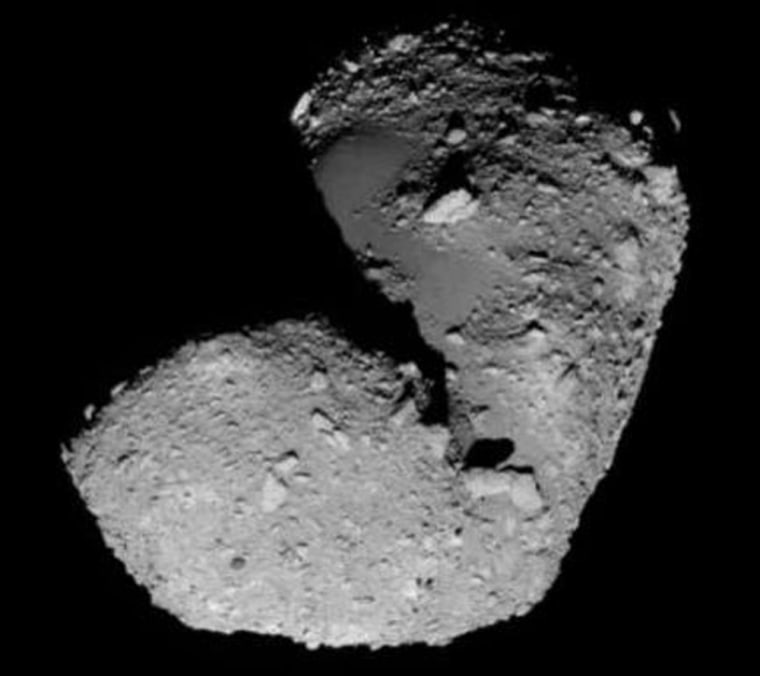Stunning imagery is being returned by Japan’s Hayabusa space probe as it draws closer to its celestial target: asteroid Itokawa.
Now just a few miles distant from the space rock, the spacecraft is poised for an historic attempt to collect and return a specimen to Earth from such an object. Imagery from Hayabusa is being used by Japanese scientists to target potential touchdown sites on the rocky world.
Hayabusa was rocketed into space from Japan’s Kagoshima Space Center on May 9, 2003, and is a project of that country’s Institute of Space and Astronautical Science, a space science research division arm of the Japan Aerospace Exploration Agency, or JAXA.
Hayabusa arrived at its exploration target, the near-Earth asteroid Itokawa, on Sept. 12, propelled there via ion engines and an Earth swing-by.
First a rehearsal, then for real
JAXA space engineers are readying Hayabusa for a “rehearsal descent” on Friday — a practice run that is expected to verify procedures for the probe's first actual touchdown on the asteroid on Nov. 12. A second touchdown of the craft is slated for Nov. 25.
Ground controllers are carefully monitoring onboard fuel reserves to attempt the historic landings.
In addition, the loss of two of Hayabusa’s reaction wheels — needed to help delicately maneuver the spacecraft — spurred new control strategies to be devised by ground control engineers.
Along with its sampling duties, Hayabusa will dispatch a tiny robot onto the space rock that hops about while relaying images.
Tiny lander
The ultra-small 1.3-pound (591-gram) device lander is dubbed MINERVA — short for MIcro/Nano Experimental Robot Vehicle for Asteroid. This small hopping robot lander totes along a set of color cameras. Two of the tiny cameras can produce stereo images of the surface conditions at the landing area of MINERVA. A third camera is mounted on the robot to scan more distant regions of the asteroid’s surface and can operate while the lander moves from spot to spot.
Hayabusa is a remote sensing mission, plus a lander and a sample return effort. With its cache of asteroid specimens, Hayabusa’s return capsule would return to Earth in June 2007, headed for a parachute deployment and landing in the desert of Woomera, Australia.
The samples of Itokawa brought back to Earth by Hayabusa could provide the first direct evidence of the link between asteroids and meteorites, Japanese space scientists point out.
